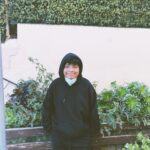The Aseltine Experience
Jose was a tactile learner—a learning style that his public school did not support. After years of having his needs ignored, Jose became defensive and oppositional—, especially towards schooling. At Aseltine, teachers worked with Jose based on his learning needs, not a “one size fits all” approach; they created lessons that focused on his learning style as a strength, rather than a weakness. Jose began to feel safe and comfortable in school for the first time. His confidence grew with each academic success he experienced—no matter how small. He no longer feared ridicule and became an active inquisitive student who excelled at sports. Jose returned to Public School, thanks to his success at Aseltine. A few years later, he reached out to the school’s Executive Director with an email about his life as an Army Paratrooper after Aseltine:
“I jump out of planes for a living. I am working on my Associate’s degree in Small Business management. I guess you can say I’m going pretty good…I just wanted to let you know I haven’t forgotten, and I appreciate the help by you, as well as others from Aseltine. It has helped me a lot. This school is probably the best school I attended.”
He was an extremely angry young man whose dream of being like other teenage boys seemed far out of reach. His anger prevented him from acknowledging his strengths – the ability to build or fix just about anything. Aseltine staff worked with Ricardo to help him deal with his anger when he least felt like doing so – and to focus on and further develop his impressive skills. When Ricardo would become frustrated with an assignment, Aseltine teachers would give him a broken appliance to fix. Initially it would take Ricardo up to two days to “fix” his way out of frustration; eventually, he learned to manage his frustration without taking time out to work on electronics. With these coping strategies, Ricardo was able to succeed in spite of his severe learning disability. Ricardo was always a hard worker; he simply needed to learn how to work through his frustration.
Reading will always be a problem for Ricardo, but not a barrier. Ricardo graduated from a public high school, became a licensed auto mechanic, married his high school sweetheart, and now has two beautiful children – one of whom graduated from a prestigious private high school before earning a scholarship to an out of state college. Ricardo achieved his dream of being a “normal”, independent, loving family man.
Jose was a tactile learner—a learning style that his public school did not support. After years of having his needs ignored, Jose became defensive and oppositional—especially towards schooling. At Aseltine, teachers worked with Jose based on his learning needs, not a “one size fits all” approach; they created lessons that focused on his learning style as a strength, rather than a weakness. Jose began to feel safe and comfortable in school for the first time. His confidence grew with each academic success he experienced—no matter how small. He no longer feared ridicule and became an active inquisitive student who excelled at sports. Jose returned to Public School, thanks to his success at Aseltine. A few years later, he reached out to the school’s Executive Director with an email about his life as an Army Paratrooper after Aseltine:
“I jump out of planes for a living. I am working on my Associate’s degree in Small Business management. I guess you can say I’m going pretty good…I just wanted to let you know I haven’t forgotten, and I appreciate the help by you, as well as others from Aseltine. It has helped me a lot. This school is probably the best school I attended.”
Learn more about different learning styles
Everybody is different. It’s a mantra that all good teachers take to heart. But understanding how to best teach your students takes a lot more than the simple acknowledgment that they’re each different. You have to know your students and know how they work. One way that students can be described as different from each other is their learning style.
Learning styles are theories that try to separate students by their different and optimum methods of learning. For example, some learning style systems separate people into visual, auditory, and kinesthetic learners: learners who prefer receiving knowledge visually, through listening, and through physical touch and doing. Some learning style models split things up far more, including social modes of learning, learning through musicianship and others. But the goal is the same: to find a structure to explain why students have different preferences for learning, and why teaching something one way can be best for one student, while teaching something another way can be best for another student.
https://study.com/academy/lesson/reasons-to-incorporate-learning-styles-in-teaching.html






Leave a Reply